The nonchalant cheesemaker
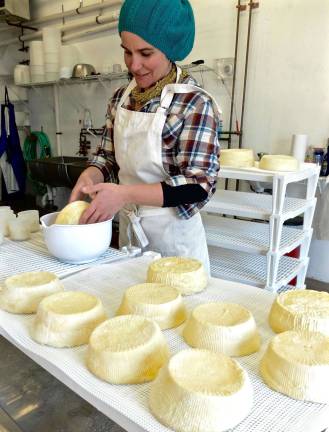
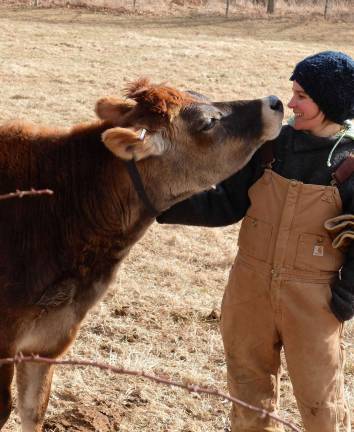
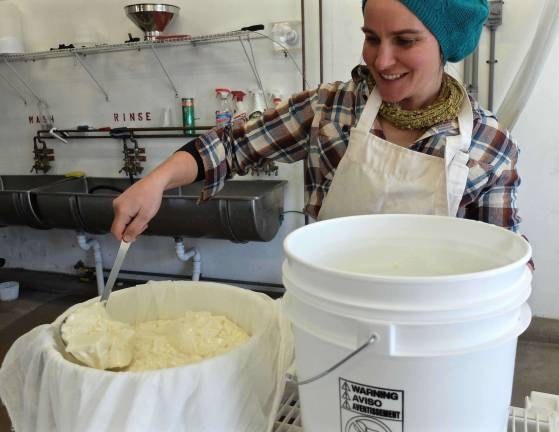
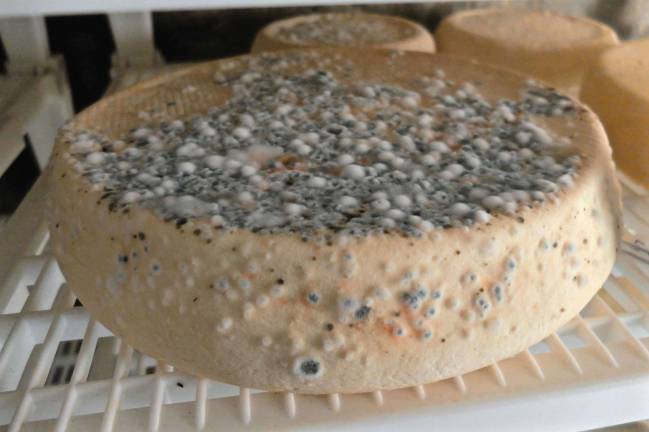
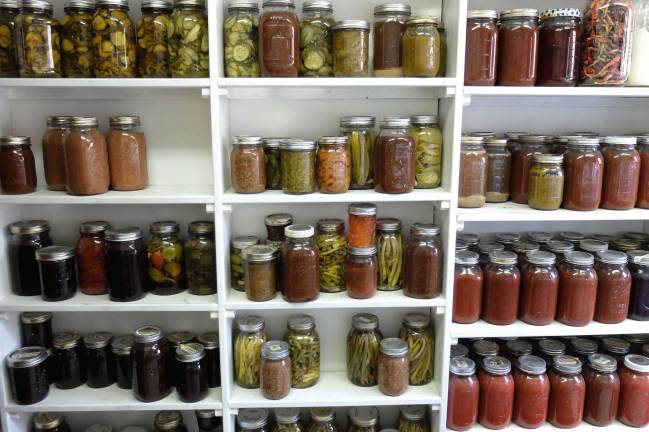
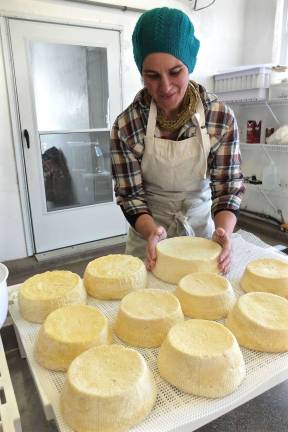
“I love hard work, I love animals, I love dirt,” says Jesse Clark. Clark moved to Highland Lakes, New Jersey, in her early twenties, excited to learn about traditional farm practices and produce her own food. Working at a local dairy farm, Bobolink, she learned to make bread in the wood-fired oven and cheese in the creamery. Soon she met her partner, Bill Becker, who was farming the historic High Breeze Farm––160 acres of woodland, vegetable gardens, and meadows for pasture-raised beef cattle.
Though small by some standards, Clark considers High Breeze a true family farm. The land is leased from the state of New Jersey. It’s a restrictive, far from ideal situation, but “our hearts are here,” said Clark, and they’ve happily raised their three children with more than enough chores to go around.
“Our herd of cattle averages around 30, we have 80 chickens right now, we have four pigs and four goats.” Their pantry is stocked floor to ceiling with preserves, pickles, canned vegetables, dried mushrooms, beans, and corn––enough to give anyone pantry envy.
Clark and Becker are always looking for ways to diversify. In the summer months they run a successful CSA and Airbnb. In 2010 Jesse got a Jersey cow to milk and make raw milk cheese for the family. Because High Breeze is on the historic registry, she couldn’t make the alterations that would allow licensing by the health department to sell the cheese. That was fine by her – but not by their customers. They kept asking for cheese, so she needed to figure out a way to make it happen.
Clark knew that the creamery where she had learned to make cheese was not being used. She approached the owners and proposed a deal: she would milk the resident herd of Jersey cows in the health department-approved barn, and move her cheese-making operation down the hill to the farm, now called Meadowburn.
So that’s what she does. Dressed in multiple layers to stay warm, Clark starts her chores in a three-sided barn where she looks out over the creek and watches the sun rise. “Milking is my absolute favorite part of the day,” she says. Using a portable milking machine, she milks five Jerseys – leaving the calves their share of milk, too.
The fresh milk goes down the hill to the creamery, where Clark strains it into two stainless steel double boilers over a hot plate. Eighty degrees, the thermometer reads: the perfect temperature to inoculate with a small amount of whey starter from the previous day’s cheese-making.
While she cleans the milking equipment, the starter speeds up the acidification process, curdling the milk and separating the solid curd from the liquid whey. Then it’s time to add liquid rennet, an enzyme taken from a calf’s stomach, to further coagulate the curds. The curd will be firmer or softer depending on the amount of rennet added.
Once firm, Clark uses a curd knife with a long blade and round end to cut the curd into cubes, and ladles it into molds. There’s a steady drip as the whey drains off into a churn. It will go to feed the pigs, with a little reserved for the next day’s starter.
“How I decide what cheese I’m going to make on any given day is a very nonchalant, organic decision making process,” said Clark. One of the kids might have a dentist appointment, or there may be chores waiting at home. “I don’t make my day around cheese. I make cheese around my day.” She laughed. “Right now I’m making an infinite number of variations. I’m experimenting with different sizes of molds to shape the cheese. A big cheese stays warmer longer so it will continue to acidify, whereas a smaller one will cool down quickly and stay a little sweeter.”
In between stages, Clark attends to cheese from previous days. Those that have been draining are unmolded and left to air dry for 24 hours. She rubs the already dried cheeses with a preserving layer of salt. They’ll sit for another day in the creamery before she carries them up to the cave where they’ll ripen for a minimum of 60 days, the point at which raw milk cheese can legally be sold.
There are a thousand and one subtle manipulations Clark can make to the cheese-making, from altering the size of the molds and curd, to variations in milk temperature, to length of straining and drying. Once in the cave––a converted root cellar in a nearby barn––nature takes over, adding more serendipity to the process.
Clark plans to milk only in winter months, and by season’s end have a range of hard and soft natural rind cheeses, which she’ll sell under the name Nonchalant Cheese.
“I think it aptly describes every part of the process––having faith in the earth to produce grass, having faith in a ruminant animal’s ability to digest grass, having faith in the bacteria that we have present here, and the molds, and the pollens, and the fungus. Just give it up to our local environment and trust that it’s going to make something delicious. I’ve been doing it for 10 years and I never once have had a batch of cheese I didn’t want to eat.”